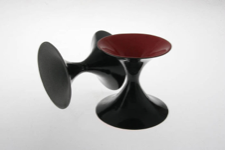
|
Cococubed.com
|
|
Neutron Star and Black Hole Initial Mass Function |
Home
Astronomy research
Software Infrastructure:
MESA
FLASH-X
STARLIB
MESA-Web
starkiller-astro
My instruments
Neutrino Emission:
Neutrinos from de-excitation
Neutrino emission from stars
Identifying the Pre-SN
Neutrino HR diagram
Pre-SN Beta Processes
Pre-SN neutrinos
White dwarf pulsations:
12C(α,γ) & overshooting
Probe of 12C(α,γ)16O
Impact of 22Ne
Impact of ν cooling
Variable white dwarfs
MC reaction rates
Micronovae
Novae
White dwarf supernova:
Stable nickel production
Remnant metallicities
Colliding white dwarfs
Merging white dwarfs
Ignition conditions
Metallicity effects
Central density effects
Detonation density
Tracer particle burning
Subsonic burning fronts
Supersonic fronts
W7 profiles
Massive stars:
Pop III with HST/JWST
Rotating progenitors
3D evolution to collapse
MC reaction rates
Pre-SN variations
Massive star supernova:
Yields of radionuclides
26Al & 60Fe
44Ti, 60Co & 56Ni
SN 1987A light curve
Constraints on Ni/Fe
An r-process
Effects of 12C +12C
Neutron Stars and Black Holes:
Black Hole spectrum
Mass Gap with LVK
Compact object IMF
He burn neutron stars
Stars:
Hypatia catalog
SAGB stars
Nugrid Yields I
He shell convection
BBFH at 40 years
γ-rays within 100 Mpc
Iron Pseudocarbynes
Pre-Solar Grains:
C-rich presolar grains
SiC Type U/C grains
Grains from massive stars
Placing the Sun
SiC Presolar grains
Chemical Evolution:
Radionuclides in 2020s
Zone models H to Zn
Mixing ejecta
Thermodynamics, Opacities & Networks
Radiative Opacity
Skye EOS
Helm EOS
Five EOSs
Equations of State
12C(α,γ)16O Rate
Proton-rich NSE
Reaction networks
Bayesian reaction rates
Verification Problems:
Validating an astro code
Su-Olson
Cog8
Mader
RMTV
Sedov
Noh
Software Instruments
2026 AAS Journals
AAS YouTube
Listing of 500+ Author Videos
AAS Peer Review Workshops
Outreach Material
Education Material
Other Stuff:
Bicycle Adventures
Illustrations
Presentations
Contact: F.X.Timmes
my one page vitae,
full vitae,
research statement, and
teaching statement.
In this article, using recently calculated models for massive stellar evolution and supernovae coupled to a model for Galactic chemical evolution, neutron star and black hole birth functions (number of neutron stars and black holes as a function of their mass) are determined for the Milky Way galaxy.
For those stars that explode as Type II supernovae, the models give birth functions that are bimodal with peaks at 1.27 and 1.76 M$_{\odot}$ and average masses within those peaks of 1.28 and 1.73 M$_{\odot}$. For stars that explode as Type Ib there is a narrower spread of remnant masses, the average being 1.32 M$_{\odot}$, and less evidence for bimodality. These values will be increased, especially in the more massive Type II supernovae, if significant accretion continues during the initial launching of the shock, and the number of heavier neutron stars could be depleted by black hole formation. The principal reason for the dichotomy in remnant masses for Type II is the difference in the presupernova structure of stars above and below 19 M$_{\odot}$, the mass separating stars that burn carbon convectively from those that produce less carbon and burn radiatively.
The Type Ib's and the lower mass group of the Type II's compare favorably with measured neutron star masses, and in particular to the Thorsett et al. (1993) determination of the average neutron star mass in 17 systems 1.35 $\pm$ 0.27 M$_{\odot}$. Variations in the exponent of a Salpeter initial mass function are shown not to affect the locations of the two peaks in the distribution function, but do affect their relative amplitudes. Sources of uncertainty, in particular placement of the mass cut and sensitivity to the explosion energy, are discussed, and estimates of the total number of neutron stars and black holes in the Galaxy are given. Accretion-induced collapse should give a unique gravitational mass of 1.27 M$_{\odot}$, although this could increase if accretion onto the newly formed star continues. A similar mass will typify stars in the 8-11 M$_{\odot}$ range (e.g., the Crab pulsar). The lightest neutron star produced is 1.15 M$_{\odot}$ for the Type II models and 1.22 M$_{\odot}$ for the Type Ib models.
Altogether there are about 109 neutron stars in our Galaxy and a comparable number of black holes.
Curiously, this effort has garnered attention post gravitational wave LIGO/VIRGO. Mostly not for its models, but for the one-line approximation in equation 8 relating baryonic and gravitational masses: $M_{\rm baryon} - M_{\rm grav} = \Delta M = 0.075 M_{\rm grav}^2$.

|

|

|
|